Tudor Clothes
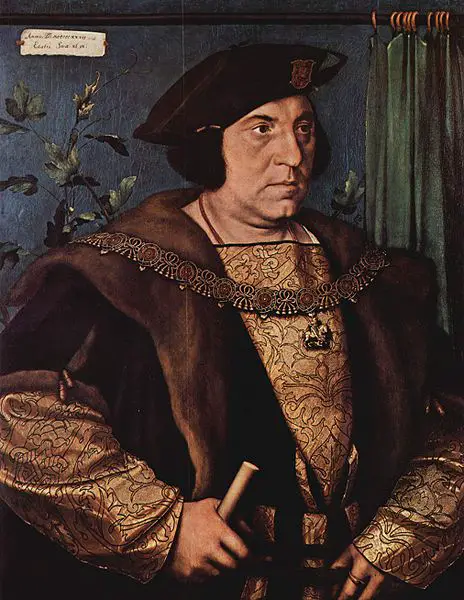
The following article is written by Bess Chilver, costumer and Tudor dress expert.
Women’s Dress at the Court of King Henry VIII
It is without doubt, that the clothing for noble men and women in the reign of King Henry VIII were exquisite. Portraits show a woman’s silhouette is conical in shape whereas the men’s silhouette is wide and square. For both men and women, fabrics are rich and luxurious using sumptuous silks and satins, the finest linens and velvets with abandon.
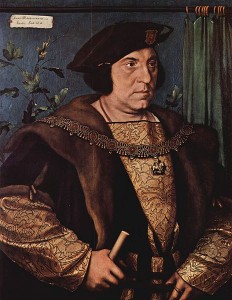 |
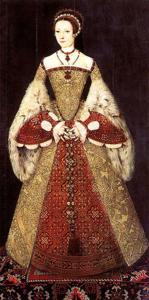 |
The fabrics and decorations used are only part of the story. Each garment worn adds to the complete ensemble. To modern eyes, the number of layers worn seem excessive, yet each layer is necessary to the whole.
Tudor Garments
So what are the garments and layers that are worn by women in the Tudor Period? The minimum number of layers actually worn would be four: Smock; Petticoat; Kirtle and Gown. Depending on where within Henry VIII’s reign one was, other layers such as the farthingale, forepart and partlet would also be worn. Headwear would be the finishing touch.
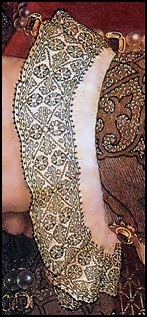
Smock
Smock of fine cambric with wide sleeves, … of fine linen”
25 Jan, 1522/1523 – Lord Monteagle’s Goods.
Letters and Papers, Foreign and Domestic – Henry VIII Vol. 3
Everyone, no matter what their rank, age or sex, would have had enough changes of linen to last at least a week. The higher the rank, the more changes were available. It was a matter of pride to wear clean linens every day.
The smock in the upper ranks would be made of very fine linen, as white as possible. The necklines and cuffs could be exquisitely embroidered in black-, red- or white work. Some may have been worked with an early form of lace called drawn threadwork.
In the early part of Tudor period, the neckline was usually square in shape, following the line of the bodice. Later on, a high necked smock was worn which had a small standing collar edged with a frill – this would eventually become the ruff of the Elizabethan era.
The sleeves would be finished with a small narrow cuff and frill. This, and the neckline, is usually all that can be seen of a smock in contemporary portraiture.
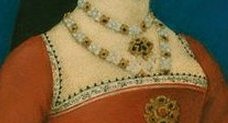
Petticoat
“…a peticoate of scarlet, the upper bodyes of crimson tapheta…”
Royal Wardrobe Accounts of Queen Mary Tudor. 1554.
The term “petticoat” comes from the French for a “little coat” and both men and women wear garments named as such.
For women, it clearly has a skirt and may or may not be upperbodied. Ninya Mikhaila of “The Tudor Tailor” suggests the bodice could be minimal – mostly seen on the back and sides of the body but the front being little more than a pair of “braces” supporting the skirt. This allows for the bare minimum of fabric being used but also minimises the amount of bulk worn beneath the next two layers.
Petticoats are mostly made of a red fabric – red being thought of as a health giving colour. This idea is seen as late as the 19th century.
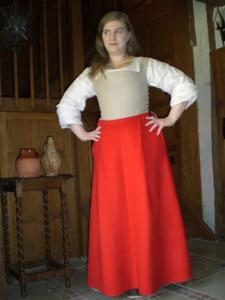 |
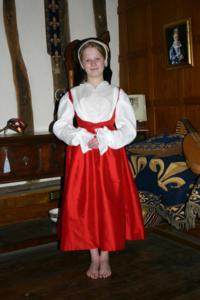 |
The first image shows my own petticoat made of an unbleached linen bodice which is lined with itself. A fine weight buckram is used to interline the bodice and is supported by boning of cane. Its fastens via laced on both sides. The skirt is a very fine weight scarlet wool. This petticoat essentially doubles as a “petticoat” and “kirtle”.
The second image is the petticoat made with the bare minimum required for the bodice. It has a deep “U” neckline. The back neckline is a deep “V” shape. It is fastened at the waist with a laces through a pair of worked eyelets. The skirt is made of a silk dupion and lined with itself. There is a lining of cotton wadding to give the skirt a bit of weight.
Kirtle
“5 yds. of white satin for a kirtle.
2½ yds. of red cloth to line her kirtle.”June 1533. Coronation of Queen Anne Boleyn. Inventory of Apparel.
Letters and Papers, Foreign and Domestic – Henry VIII, Vol 6.
The kirtle was a garment that supported the bust and created the correct silhouette for the period. It was worn over the petticoat, and from the 1540s onwards, over the farthingale. It seems that the kirtle bodice was stiffened in some way, usually with buckram. This was a stiffened linen which may have had additional stiffening consisting of some kind of “boning”. However, it is also clear, that whatever stiffening methods were used, the bodice of the kirtle was not made in the same way as a Victorian or modern corset is. Nor was it designed to cinch in the waist and torso in the same way.
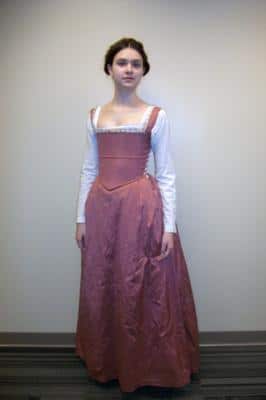
The kirtle depicted above is very similar in construction to my upper bodied petticoat, but is designed to be seen beneath the overgown. It is also side laced and has a stiffened bodice providing a firm foundation for the overgown.
Portraits show a tantalising glimpse of the kirtle – usually at the neckline as can be seen here in Mary Boleyn, Lady Carey’s, portrait:
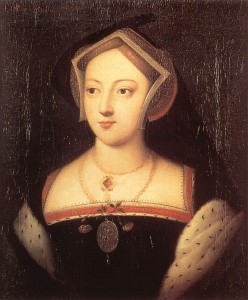
Gown, Forepart and Foresleeves
“…a gown of right crimson satin, to be lined with cloth of gold of tissue…”
Coronation of Queen Anne Boleyn.
Inventory of Apparel. June 1533.
The gown is the garment in Tudor Dress which is seen in its entirety by other people. The Smock and Petticoat are very much underclothes. The kirtle is usually only seen peaking out above the gown neckline so this too is mostly hidden.
As the gown is so visible a garment, it needed to make an impact. This is where sumptuous fabrics could be used such as velvets or damasks or Cloth of Gold. The wealthier a person was or the higher the status, the more sumptuous (and expensive) the fabrics.
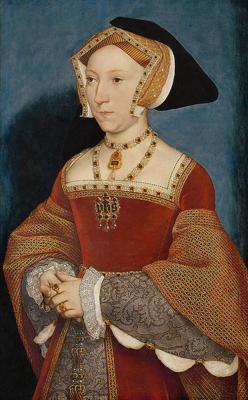
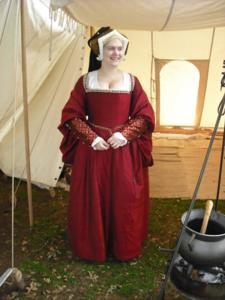 |
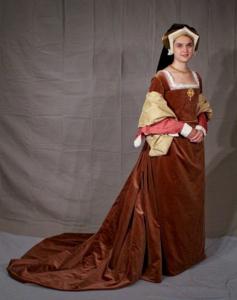 |
Headwear
“And as for Mrs. Anne’s French hood, my lady Sussex had, and Mrs. Katharine gave hers to Mrs. Parr”
28 Jan, 1538 – Lisle Letters. John Husee to Lady Honora Lisle
Letters and Papers, Foreign and Domestic – Henry VIII Vol. 3.
Most people, when thinking about Tudor headwear, will bring to mind, images of two headdresses that were worn during King Henry VIII’s reign. These are the French hood and the English or, as is more commonly termed now, the Gable Hood.
It is a common misconception, that Queen Anne Boleyn was responsible for bringing in the ubiquitous French Hood whereas her predecessor Queen Katherine of Aragon and also Anne’s successor, Queen Jane Seymour, both preferred the English Hood.
Early versions of both forms of hood are seen from the latter part of the 15th century. Katherine of Aragon was painted in version of the French Hood as well as the English Hood, giving the lie to this myth.
The French Hood
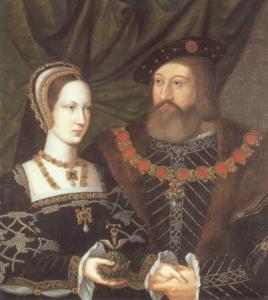 |
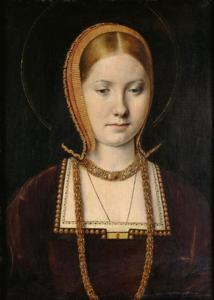 |
The English Gable Hood
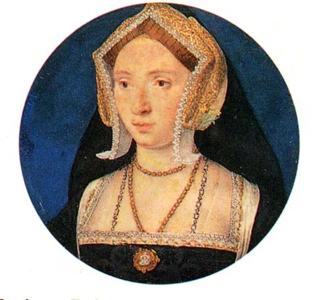 |
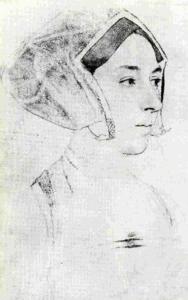 |
Whatever one’s status – be it Queen, Gentle- or Working woman – headwear of some kind would be worn. Highly decorated as we have seen for the wealthy but simple linen coifs for those of lower status.
A Tudor Gown in the 16th century was the culmination of the work numerous skilled craftsmen, artisans and merchants. From the silk Merchant to the Weaver; from the Tailors to the Seamstresses to the Embroiderers and Milliners.
The finishing touches are made by the Goldsmith. Pearls and jewels in gold settings are worn as pendants attached to choker necklaces; as brooches on the front of a bodice; as billiaments on necklines and hoods and “ouches” on sleeves.
Truly, the Tudor Noblewoman was exquisitely dressed.
References
Mikhaila, Ninya and Malcolm-Davies, Jane. The Tudor Tailor: Reconstructing Sixteenth Century Dress London: Batsford, 2006.
Mikhaila, Ninya, Johnson, Caroline and Malcolm-Davies, Jane. ‘And her black satin gown must be new-bodied’: The Twenty-First-Century Body in Pursuit of the Holbein Look. Costume, vol 42, 2008 (The Costume Society).
Hayward, Maria. Dress at the Court of King Henry VIII, Leeds: Maney, 2007.
Hayward, Maria. Rich Apparel: Clothing and the Law in Henry VIII’s England, Farnham, Surrey: Ashgate, 2009.
‘Henry VIII: September 1531, 1-30’, Letters and Papers, Foreign and Domestic, Henry VIII, Volume 5: 1531-1532 (1880), pp. 199-217. Find online at http://www.british-history.ac.uk/